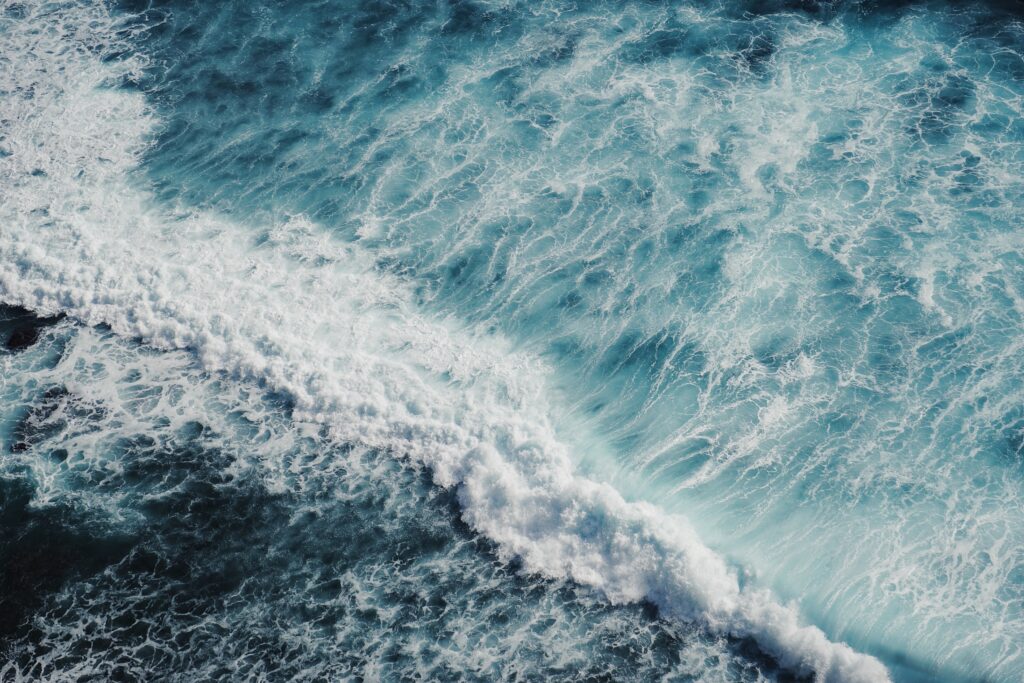Imagine being suspended in the open ocean, surrounded by the depths of the mysterious marine world, with only a metal cage as your protection. As a thrill seeker or a curious adventurer, you might find yourself wondering just how deep those shark cages can go. Well, fear not, for this article will unravel the depths that these underwater enclosures can withstand, giving you a glimpse into the incredible lengths people will go to experience the thrilling presence of these majestic predators.
The Purpose of Shark Cages
Shark cages serve multiple purposes that benefit divers, researchers, and eco-tourism.
Protection for Divers
One of the main reasons for using shark cages is to provide protection for divers. By enclosing divers in a secure cage, they are shielded from potential attacks or aggressive behaviors by sharks. This safety measure allows divers to observe and interact with sharks up close, without putting themselves at risk.
Observation and Research
Shark cages also play a crucial role in facilitating observation and research of sharks. Researchers can enter shark-infested waters safely inside a cage, enabling them to study the behavior, feeding habits, and migration patterns of these fascinating creatures. The close proximity provided by the cage allows for detailed observations and data collection that would be difficult or impossible to obtain otherwise.
Eco-tourism
Lastly, shark cages have significantly contributed to the rise of shark cage diving as a popular eco-tourism activity. Many people are captivated by the idea of getting up close and personal with these majestic predators, and shark cage diving provides a unique opportunity to do so. By creating a safe and controlled environment for both sharks and humans, shark cage diving has become an important source of income for local communities and a means to raise awareness about shark conservation.
Design and Construction of Shark Cages
The design and construction of shark cages are crucial aspects of ensuring their safety and effectiveness. Several factors are taken into consideration during this process.
Material
Shark cages are typically made from strong and durable materials such as steel or aluminum. These materials offer the necessary strength to withstand the forces exerted by sharks as they interact with the cage.
Sturdiness and Durability
To ensure the sturdiness and durability of shark cages, they are subjected to rigorous testing and quality control measures. They must be able to withstand the pressure exerted by a shark’s bite or ramming without compromising the safety of the divers inside.
Dimensions and Size
The dimensions and size of a shark cage are carefully determined to provide adequate space for divers while still allowing a clear view of the surrounding environment. The cage should be spacious enough for the divers to move comfortably, but not excessively large, as that could compromise its structural integrity.

Types of Shark Cages
There are various types of shark cages, each designed for different purposes and diving conditions.
Surface Cages
Surface cages are the most common type of shark cage and are designed to float on the water’s surface. They are secured to a boat or anchored in place, allowing divers to enter and exit easily. Surface cages provide divers with a close-up view of sharks without having to descend to great depths.
Free-Drifting Cages
Free-drifting cages are similar to surface cages but are not anchored to a specific location. These cages are attached to a boat or a buoy by a line, allowing them to drift with ocean currents while divers remain safely inside. This type of cage offers a different diving experience, as divers can encounter sharks in various locations as they drift along.
Bottom-Fixed Cages
Bottom-fixed cages, as the name suggests, are secured to the ocean floor. These cages provide a more stable and controlled environment for observing sharks, as they are less susceptible to the movements of the ocean currents. Bottom-fixed cages are commonly used in areas with strong currents or rough sea conditions.
Submersible Cages
Submersible cages are designed to be lowered to different depths underwater, allowing divers to explore and observe sharks in their natural habitat. These cages are equipped with mechanisms to control their descent and ascent, ensuring the safety of divers as they explore greater depths. Submersible cages offer a unique and thrilling experience for those seeking deeper shark encounters.
Shark Cage Diving Locations
Shark cage diving has gained popularity in various locations around the world. These locations offer diverse marine ecosystems and thriving shark populations, making them prime spots for shark cage diving experiences.
South Africa
South Africa is renowned for its shark cage diving opportunities, particularly near the coastal town of Gansbaai. The pristine waters of Gansbaai attract a large population of great white sharks, providing divers with the chance to encounter these magnificent creatures up close.
Australia
Australia is another popular destination for shark cage diving, with several locations offering unique shark encounters. Areas such as Port Lincoln in South Australia and Seal Island in Western Australia are known for their thriving shark populations, including great whites, tiger sharks, and bull sharks.
Mexico
Mexico’s Guadalupe Island is famous for its shark cage diving experiences, particularly with great white sharks. The crystal-clear waters off the island provide excellent visibility, allowing divers to observe these apex predators in their natural habitat.
United States
The United States offers various shark cage diving opportunities along its coastlines. Destinations such as California, Florida, and Hawaii are known for their diverse shark populations and organized shark cage diving tours that cater to both locals and tourists.
The Bahamas
The Bahamas is a tropical paradise that also offers thrilling shark cage diving experiences. Locations such as Tiger Beach and Stuart Cove’s in Nassau attract divers from around the world with their abundance of Caribbean reef sharks, tiger sharks, and hammerhead sharks.
Hawaii
Hawaii is not only a breathtaking vacation destination but also a haven for shark enthusiasts. Divers can experience shark cage diving off the coast of Oahu and Maui, where encounters with scalloped hammerhead sharks and tiger sharks are common.

Depth Limitations of Shark Cages
Shark cages have certain depth limitations based on their design and construction, which impact their suitability for various depths.
Surface Floating Cages
Surface floating cages typically have shallower depth limitations, ranging from a few feet to several meters below the water’s surface. These cages are not built to withstand extreme water pressure and are primarily designed for encounters with sharks close to the surface.
Shallow Water Cages
Shallow water cages can operate at depths ranging from a few meters to around 15 meters. These cages are commonly used in areas with shallow coastal waters, where sharks are known to frequent and divers can safely observe them.
Deep Water Cages
Deep water cages are built to withstand greater water pressure and can operate at depths of up to 30 meters or more. These cages are used in locations where sharks inhabit deeper waters, allowing divers to explore a wider range of marine habitats.
Extreme Depth Cages
For those seeking deeper shark encounters, specialized extreme depth cages have been developed. These cages are constructed with advanced materials and engineering techniques that enable them to withstand extreme water pressure at depths exceeding 30 meters. However, diving to such depths requires highly experienced and certified divers due to the increased risks involved.
Factors Influencing Depth Limitations
Several factors influence the depth limitations of shark cages, including their design, materials, water pressure, and the need for visibility and lighting.
Design and Materials
The design and materials used in constructing shark cages are critical in determining their depth limitations. Cages constructed with stronger materials and innovative designs can withstand greater water pressure, allowing for deeper dives.
Water Pressure
As divers descend deeper into the ocean, water pressure significantly increases. Shark cages must be specifically designed to endure these pressures without compromising the safety of the divers inside. This necessitates careful engineering and robust construction.
Visibility and Lighting
Visibility is another crucial factor when it comes to diving in deeper waters. At greater depths, water conditions may impair visibility, making it challenging to observe sharks and their behavior. Additionally, proper lighting systems are necessary to enhance visibility for divers inside the cage, ensuring a safe diving experience.

Safety Measures in Shark Cage Diving
Ensuring the safety of divers is of paramount importance in shark cage diving operations. Several safety measures are implemented to mitigate risks and provide a secure environment for divers.
Certified Operators and Guides
Shark cage diving should always be conducted under the guidance of certified operators and experienced guides. These individuals possess the necessary knowledge and expertise to create a safe diving environment, provide thorough briefings on safety procedures, and handle any potential emergencies that may arise.
Cage Maintenance
Regular maintenance and inspection of shark cages are essential to ensure their structural integrity and minimize the risk of accidents. Cages should undergo routine checks, repairs, and quality control measures to identify and address any potential weaknesses or faults.
Emergency Procedures
Operators of shark cage diving operations must have well-established emergency procedures in place. This includes protocols for divers to follow in the event of equipment failure, unexpected shark behavior, or other unforeseen circumstances. All divers should be thoroughly briefed on these procedures prior to entering the water.
The Quest for Deeper Shark Encounters
As divers seek more thrilling and immersive experiences, there has been a growing interest in exploring deeper shark encounters. Advancements in submersible cage technology, along with a better understanding of shark behavior, have fueled this quest.
Advancements in Submersible Cages
Technological advancements have led to the development of submersible cages, capable of descending to greater depths. These cages are equipped with sophisticated controls and safety mechanisms, allowing divers to explore the underwater world and observe sharks at depths previously unattainable.
Exploring Greater Depths
The pursuit of deeper shark encounters has pushed the boundaries of what is possible in shark cage diving. Divers are eager to explore greater depths, venturing into the shark’s natural habitat and gaining a deeper understanding of their behavior and ecosystem dynamics.
Technological Innovations
In addition to submersible cages, technological innovations play a significant role in advancing shark cage diving experiences. Innovations such as underwater cameras, live-streaming capabilities, and augmented reality devices enhance the overall experience and allow a wider audience to witness the beauty and importance of shark conservation.

The Risks of Deep Shark Cage Diving
While deep shark cage diving offers thrilling experiences, it also entails certain risks that need to be considered and managed properly.
Increased Water Pressure
As divers venture into deeper waters, the water pressure increases significantly, which can pose a risk to their safety. The structural integrity of the cage becomes even more critical at extreme depths, as any failure could be catastrophic for the divers inside.
Compromised Visibility
At greater depths, visibility can be reduced due to factors such as water turbidity and insufficient lighting. This can limit the divers’ ability to observe sharks effectively and may lead to missed opportunities or misinterpretation of their behavior.
Limited Mobility and Space
Deep shark cage diving often involves descending to depths where space is restricted, limiting the divers’ mobility inside the cage. This constraint can affect their ability to position themselves for optimal viewing and may create a crowded or uncomfortable environment.
Conclusion
Shark cages serve a vital role in providing protection, facilitating observation and research, and promoting eco-tourism. The design and construction of shark cages, as well as their depth limitations, are crucial considerations to ensure safe and effective diving experiences. From surface cages to submersible cages, they offer unique opportunities to encounter sharks in their natural habitat. However, deep shark cage diving requires careful planning and consideration of the associated risks. With proper safety measures, advancements in technology, and a focus on conservation, shark cage diving can continue to offer thrilling and educational experiences while promoting the importance of protecting these magnificent creatures and their habitats.

- Can You Dive With Sharks In California? - August 19, 2023
- What Are The Rules Of Shark Cage Diving? - August 19, 2023
- Where In Florida Can You Dive With Sharks? - August 19, 2023








